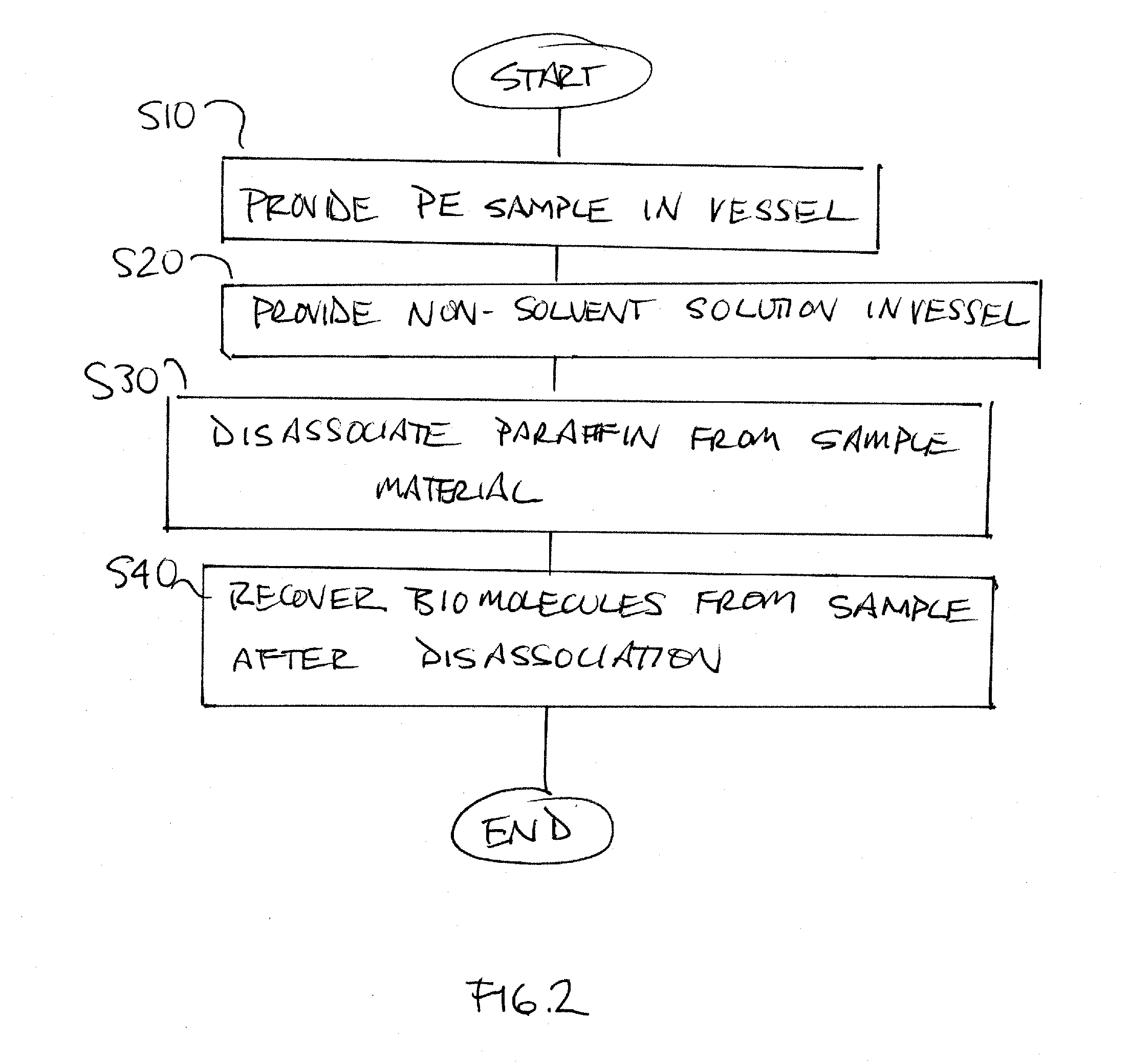System and method for processing paraffin embedded samples
a paraffin embedded and sample technology, applied in the field of paraffin embedded sample processing, can solve the problems of reducing the yield of good quality nucleic acid and/or proteomic material recovered from an ffpe, increasing the difficulty of proper disposal, and increasing the risk of contamination, so as to reduce the yield and increase the yield of nucleic acid material , the effect of dissociating the sample relatively quickly
- Summary
- Abstract
- Description
- Claims
- Application Information
AI Technical Summary
Benefits of technology
Problems solved by technology
Method used
Image
Examples
example
[0042]A comparison test was performed to compare nucleic acid (DNA in this case) yield from an FFPE sample using processes in accordance with aspects of the invention with the yield obtained using a Promega ReliaPrep FFPE gDNA Miniprep system. A buffer containing 0.25% of SDS was used to disassociate paraffin from the sample. 106 microliters of this buffer was loaded into a Covaris microTUBE Screw-Cap vessel. Two pieces of scroll, 20 micrometers in thickness and a weight of less than 5 mg were loaded in the same microTUBE vessel. A first acoustic treatment (with a Covaris E or S-Series) consisting of 175 W, 10% duty factor, 150 seconds and 200 cycles per burst at 41 degrees C. was used to disassociate the paraffin from the sample and rehydrate it. 20 microliters of Proteinase K (at 20 mg / ml) was then added in the same microTUBE vessel. A short acoustic treatment (175 W / 10% duty factor / 10 seconds / 200 cycles per burst) was then done to mix the Proteinase K and the sample. The sample w...
PUM
| Property | Measurement | Unit |
|---|---|---|
| length | aaaaa | aaaaa |
| thickness | aaaaa | aaaaa |
| frequency | aaaaa | aaaaa |
Abstract
Description
Claims
Application Information
 Login to View More
Login to View More - R&D
- Intellectual Property
- Life Sciences
- Materials
- Tech Scout
- Unparalleled Data Quality
- Higher Quality Content
- 60% Fewer Hallucinations
Browse by: Latest US Patents, China's latest patents, Technical Efficacy Thesaurus, Application Domain, Technology Topic, Popular Technical Reports.
© 2025 PatSnap. All rights reserved.Legal|Privacy policy|Modern Slavery Act Transparency Statement|Sitemap|About US| Contact US: help@patsnap.com


